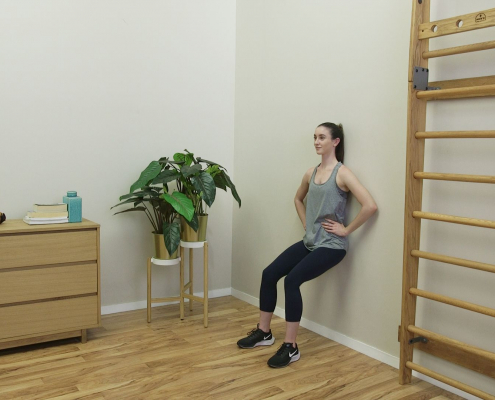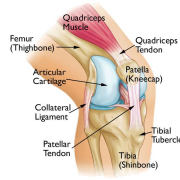Knee Pain (Patellofemoral)
Knee Pain
By Aaron Woolley, Physiotherapist.
Knee pain is a widespread issue that can impact individuals of all ages and fitness levels. The causes of knee pain vary and can stem from acute injuries like fractures, ligament or meniscus tears, as well as chronic conditions such as arthritis, gout, tendinopathies, or patellofemoral pain syndrome (PFPS).
Among these, PFPS stands out as one of the most common knee injuries, affecting a significant portion of the population during their lifetime, with a higher prevalence among adolescent females. Often referred to as “runner’s knee” or “jumper’s knee,” PFPS is commonly experienced in the athletic community but can also occur in non-athletes. It is essential to address knee pain promptly and accurately diagnose the underlying cause to facilitate effective treatment and ensure optimal well-being.

https://orthoinfo.aaos.org/en/diseases–conditions/patellofemoral-pain-syndrome/
Risk factors for getting Patellofemoral pain syndrome include excessive weight, muscular imbalances, rapid changes in activity levels and simply overuse from sports such as running or occupations that require repetitive squatting, hill or stair climbing.
PFPS is primarily caused from mal-tracking of the patella (knee cap) within the femoral condyles (end of the thigh bone). This can come from the following lower limb soft tissue changes.
- Tight Iliotibial Band (ITB)
- Tightness in the Hamstrings, Hip Flexors and Calf muscles
- Weakness in the Gluteus muscles. Particularly Gluteus Medius
- Weakness in the medial Quadriceps (VMO)
- Excessive pronation of the feet

https://orthoinfo.aaos.org/en/diseases–conditions/patellofemoral-pain-syndrome/
Knee pain can be effectively managed through conservative approaches, and in more severe cases, interventions like injections or surgery may be necessary. However, Patellofemoral pain syndrome (PFPS) is fortunately a condition that rarely requires invasive treatments.
At Robina Physio on the Gold Coast, we possess the expertise to accurately assess the cause of your knee pain during our clinic sessions. For PFPS, our subjective assessment focuses on identifying factors like insidious onset, overload events, and specific aggravating activities such as squatting, climbing stairs/hills, and pain with sustained sitting. During the objective examination, we thoroughly assess the entire structure of your knee joint, including range of motion, strength, ligament and tendon integrity, functional status (including running), and patella tracking.
Our physiotherapy treatments for knee pain are highly effective and encompass various techniques such as soft tissue release of tight muscles, dry needling, taping, orthotics, and targeted strengthening exercises for the glutes, quadriceps, and hamstrings.
Below, you will find three exercises that the physiotherapists at Robina Physio on the Gold Coast use with high rates of success in treating patellofemoral pain syndrome. If you are experiencing this condition, we highly recommend giving these exercises a try.
- Cycling: This is simple yet probably the best bang for your buck exercise for managing knee pain. Start within your limits and build steadily. Aim for 20-30 mins most days.

- Wall Sit: This exercise is very effective at strengthening your quadricep muscles. Don’t go too deep when you start. If you get pain then simply go a little higher. Try getting to 3 x 1 min holds. (Pic from Telehab)

- Side Kick (Hip Abduction): This can be done in standing with or without a resistance band. Make sure your contracting your glute (bum) muscles properly and not using your hip flexors. Try 3 x 20 slow repetitions. (Pic from Telehab)

At Robina Physio on the Gold Coast we offer expert assessment, treatment and guidance for knee injuries. Don’t hesitate to Contact Us on (07) 5578 7233 or BOOK NOW and we will help get you moving normal again.



